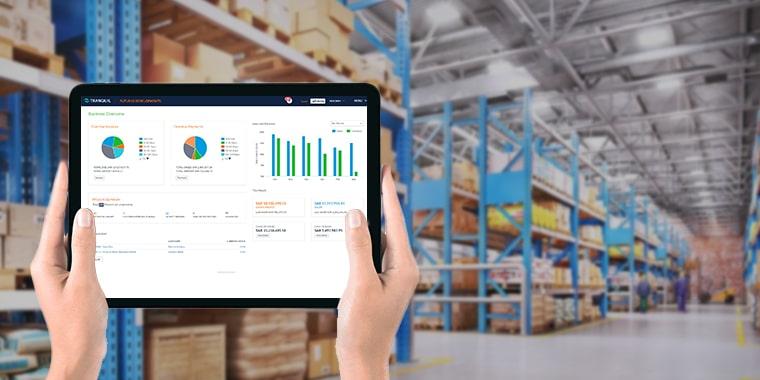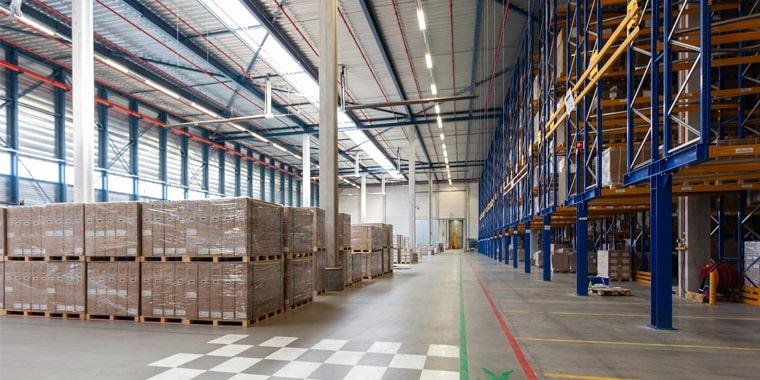
Inventory is the most important and valuable asset.
Any business (apart from a service company) needs to purchase, store, consume in production, and sell inventory; this includes managing raw materials, accessories, parts, and finished goods.
They also have to process and store inventory.
It is the single most important business function for an organization.
Managing inventory efficiently is even more critical for manufacturing companies as they have to track and manage the inventories from raw materials to finished goods.
Inventory management attempts to streamline inventory so that there is neither excess nor shortage of inventory.
ALSO READ: What is Assemble to Order Process?

Inventory is at the core of the business for any company that manufactures or sells goods, and getting caught short of goods can hamper the business as it means pausing production or turning away customers.
On the other hand, having too much inventory can lead to heavy expenses.
Arranging warehousing, paying insurance, utility bills, and labour for handling; some types of inventories may need special arrangements like refrigeration, temperature control, or security.
Depending on your region, you may also incur taxes on unsold inventory.
What’s more, you also run this risk of inventory getting damaged or spoilt, and it could get stolen too.
If it remains unsold for a long time, it may go out of fashion or be rendered unsaleable because of the appearance of new and improved products in the market.
This is why it is imperative that businesses manage their inventory properly.
ALSO READ: Common Inventory Management Mistakes to Avoid
There are several factors to be kept in mind: when to restock inventory items, what quantities to order, how much to produce, what is a good price to pay for the stock, when to sell, what price to sell, and so on.
While these may sound like simple matters at first, they are not that simple, and things can become very complicated and confusing.
The norm for small businesses is to manually track inventory and calculate the reorder levels and reorder quantities using excel sheet formulas and a lot of guesswork.
In any case, it may not be the best thing to do.
ALSO READ: Why is Cycle Stock Important for Your Business?
A large company simply cannot afford to rely on manual entries, counting, and spreadsheets.
Only a reliable ERP solution like Tranquil with a robust inventory management module can ensure effective inventory management when there are multiple products, hundreds of inventory items, and thousands of transactions.
There are several strategies, formulae, and techniques that different companies follow when it comes to inventory management.
Take a look at what they are:
These are the most popular and common techniques.
There are also other methods used by some companies like drop-shopping and cross-docking, backordering, and consignment.
Order up to level is a formula that will help you efficiently manage your inventory – and without hassles.
You can rest assured about your inventory levels once you apply this formula.
It is in two parts.
ALSO READ: What is Negative Inventory and How Can you Prevent it?

Under this method, there is an intermittent review of stock levels, and a specific quantity of that each inventory item is purchased so that inventory levels can go back to the target levels.
This strategy is concerned with placing orders so that the inventory item is brought back to the optimal level – basically, it ensures that you have adequate inventory, but just enough.
It eliminates the possibility of excess stocking.
Having too much inventory can be expensive for a business, as we saw earlier.
Order lesser than what you need, and you are highly likely to run out of raw materials in the middle of production, causing you to pause production.
This means a cascading effect of delays, right up to delivery.
Or, if you’re selling goods, it means turning away customers and disappointing them.
ALSO READ: Physical Stock Verification and Its Advantages
The order up to level is put into action when the inventory level reaches the reorder point or has gone below it.
By taking stock of your inventory items at regular intervals, you will be able to maintain the order up to level.
The simplest formula for calculating the order up to level is as follows:
Target level – reorder point = order up to level (quantity)
We can calculate the reorder points in two different ways:
Reorder point = basic stock + safety stock + (sales per day in units * number of days taken for delivery)
This of course assumes that the business maintains basic stock and buffer stock.
Supposing it doesn’t maintain basic and buffer stocks, the formula would not have the first part.
The formula would be:
Reorder point = sales per day in units * number of days taken for delivery.
Therefore, the order up to level formula would be:
Quantity of Order up to level = Target level – (basic stock + safety stock + (sales per day in units * the number of days taken for delivery )) – For companies that maintain basic and buffer stocks.
And,
Quantity of order up to level = Target level – (sales per day in units * number of days taken for delivery)
Today, there are numerous ERP software systems for supply chain management that have state-of-the-art modules for inventory management, which simplify and streamline these activities.
Many ERP solutions have supply chain management modules and inventory management modules separately as well.
In these systems, you can configure the software to notify you when the stock reaches the reorder point so that you may be able to eliminate the periodic review process.
ALSO READ: Benefits of Stock Status

Both these – reorder point or level, and order up to level, are policies of inventory control.
There are a few differences between them.
Let’s take a look:
Companies following reorder point or reorder level strategy review stock continuously, but companies that follow order up to level review inventory levels only periodically.
ALSO READ: Understocking and Overstocking in inventory
Under the order up to level method, the quantity of the order differs depending on the requirements.
Under reorder level method, the quantity of the order is fixed.
When you follow the reorder point approach, you place orders for the inventory as soon as the stock reaches the reorder level – even if the last order was placed just a few days ago.
However, there is a fixed interval of time between orders in the order up to level approach.
ALSO READ: Importance of Stock Keeping Unit

Reorder quantity refers to the quantity of the inventory item that needs to be ordered to reach the target level, while the order up to level conveys the inventory level at which point the new order has to be placed to ensure that the stock level reaches the target level.
Reorder quantity focuses on the quantity or number of items to be ordered, whereas order up to level focuses on when the order should be placed.
ALSO READ: What is Stock Adjustment and Stock Transfer?
The reorder quantity will be impacted by the shipping costs, discounts, and lead time.
But order up to level is mainly concerned with the lead time, or the time taken by the supplier to deliver the stock.
Reorder quantity is likely to differ every time you order, but order up to level is likely to be more or less fixed, with barely any change.
ALSO READ: Why Is Inventory Reduction Important?
The reorder level can be calculated by multiplying the lead time in days with the average demand in numbers and adding safety stock (if the company maintains safety stocks.
This last step can be avoided by those who don’t maintain it)
Safety stock = (Lead time * Average demand) = reorder level.
Conclusion
Most businesses do a lot of guesswork when it comes to inventory management; they may manually try to forecast the demand based on just the previous year’s figures and base their inventory decisions of purchase, production quantities, and so on, on solely that.
This can turn out to be quite disastrous.
The business environment is very different today, as the competition is intense, and most companies have adopted tech in a huge way.
ALSO READ: What Is an Inventory Control System?
Technology helps them track historical data over the past few years, and can also factor in current trends, consumer behaviour, and economic factors to deliver demand forecasts that are far more reliable.
You can also save time, effort, and money, and get data in real time, with a bird’s eye view of your organizational processes and data.
With a cloud-based ERP like Tranquil, you can also be assured about the safety of your sensitive data as the storage is remote and well protected.
If you are still relying on legacy systems and siloed information, you could be missing out on business opportunities and incurring expenses that can be easily avoided.
ALSO READ: What Is Cloud Data Protection?
Tranquil Cloud ERP can help you automate data entry and other time-consuming and monotonous processes, streamlining your organization. Do schedule a demo of our software at a date and time of your convenience, and we will explain how it all works. Our team will be more than happy to resolve all your queries.